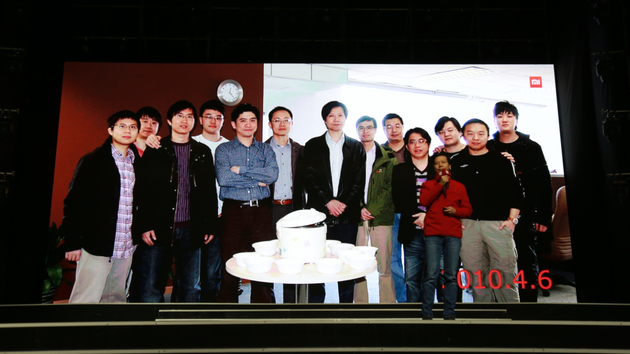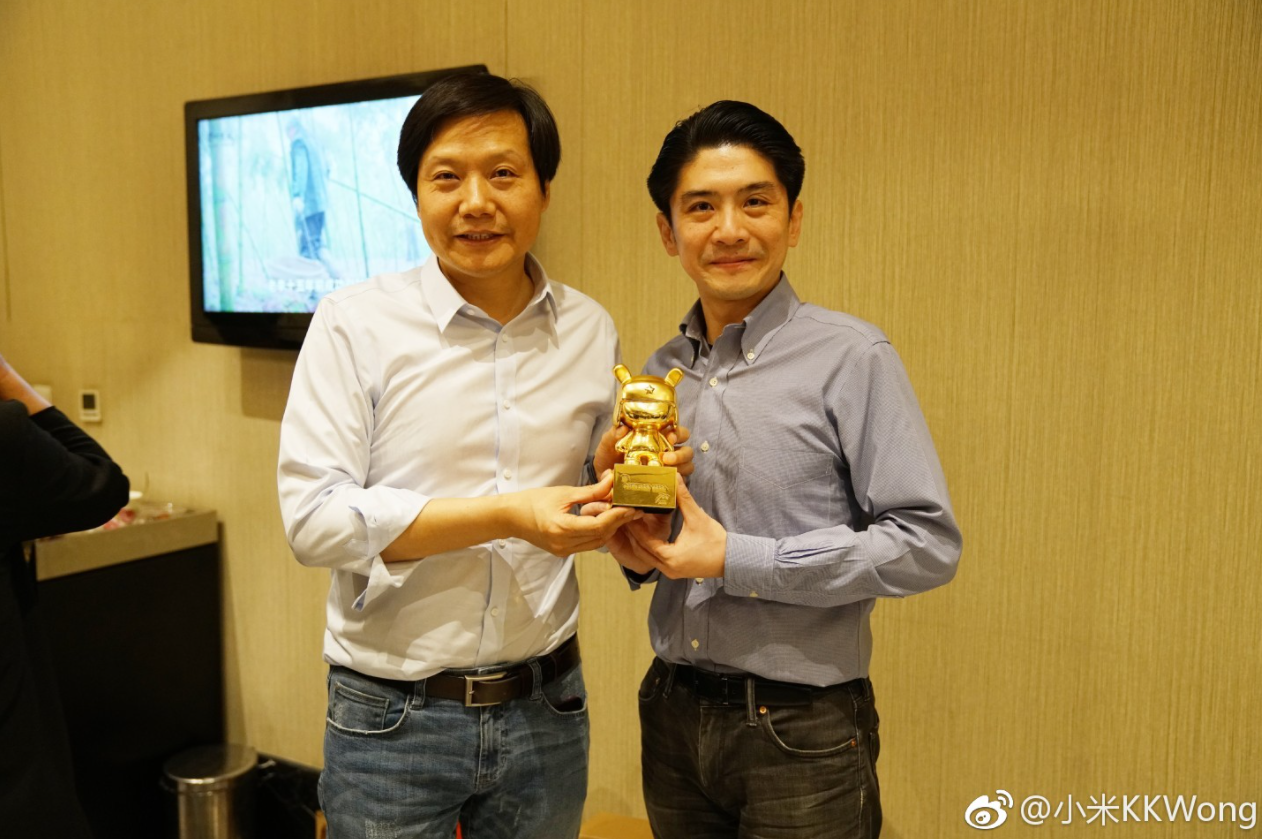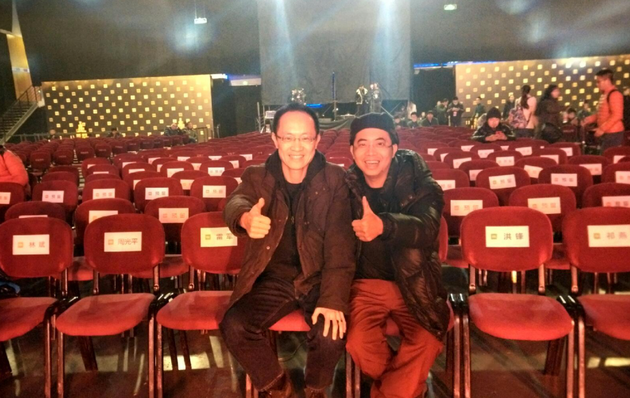There is one less member who drank millet porridge together when starting a business. In the process of the establishment of Xiaomi, there is such an interesting thing. On April 6, 2010, in the Yingu Building of Baofu Temple Bridge in Beijing, Lei Jun and other 13 people drank the millet porridge cooked by Li Wanqiang’s father together and embarked on the journey of entrepreneurship together. During the development of Xiaomi, some of the members who ate porridge together at the beginning have chosen to leave Xiaomi.
Text | Half Moon
According to recent media reports, Xiaomi’s No. 12 employee, Li Weixing, has resigned. As an initial member who participated in the founding of Xiaomi, Li Weixing used to work at Microsoft, mainly engaged in the research and development of Windows Phone system software. Later, he was introduced to Xiaomi by Lin Bin and served as the vice president of MIUI and the vice chairman and secretary general of the Xiaomi Technical Committee.

Li Weixing’s departure has also made many netizens pay attention to the current situation of the initial members of Xiaomi who first drank millet porridge together. The 13 people who drank millet porridge together included four co-founders, Lei Jun, Lin Bin, Li Wanqiang and Huang Jiangji, and nine founding team members including Sun Peng, Fan Dian, Liu Xinyu and Li Weixing. In addition to Li Weixing, Huang Jiangji and Li Wanqiang have resigned, so which industries did they go to after leaving?
Choose to build a car after leaving Xiaomi?
According to the chronological order of leaving Xiaomi, let’s talk about Huang Jiangji, who was mainly responsible for Xiaomi’s Michat, routers and Xiaomi Discovery Lab business.
Huang Jiangji, like Lin Bin and Huang Weixing, originally worked at Microsoft, and finally joined Xiaomi’s entrepreneurial team through Lin Bin’s recommendation. However, the main business that Huang Jiangji was in charge of during his time at Xiaomi did not seem to develop smoothly. The launch of Mi Chat has a certain first-mover advantage and attracted a number of users.But just over a month later, Tencent, the domestic social leader, launched WeChat. Through the rapid iteration of products and the drainage of QQ, the number of users using WeChat quickly exceeded 50 million. Since then, WeChat, which has been running all the way in the social field, also pronounced the final outcome of Mi Liao from the side.
At that time, the development of Xiaomi routers and Xiaomi Discovery Lab was also difficult to describe as success. Liu De, the head of Xiaomi’s ecological chain, implicitly stated in an interview with Caijing that the TV and router business did not reach the “expected” level. success”.
In 2017, there was news that Xiaomi routers sold more than 10 million in more than two years, but it was still difficult to catch up with the old player TP-Link in the industry. According to the “2017 Router Field Analysis Report” released by the operator WorldNet, TP-Link’s market share is as high as 20.7%, while Xiaomi’s share is only 11.9%.

As for the VR equipment mainly promoted by Xiaomi Discovery Lab at that time, users who have understood the development of VR at that time will know that the VR wave is hot and cold, and Xiaomi’s enthusiasm for developing VR business gradually “disappeared” along with the fading of the industry wave. Now, when searching for the keyword “VR” on Xiaomi’s official website, no related products have been retrieved.
After Huang Jiangji left Xiaomi in 2018, there was not much news related to him on the Internet, and he used to regularly post on Weibo and gradually began to stop posting. But Xiao Lei understands,Huang Jiangji had chosen to join the new energy vehicle manufacturer “Kering Auto” in 2021 and served as a director. It is worth mentioning that Kering Auto has a lot of origins with Xiaomi. The COO of the company, Zhao Caixia, is the vice president of the original Xiaomi ecological chain, and another director, Liu De, is the current senior vice president of Xiaomi Group.Looking at it this way, even though Huang Jiangji has left Xiaomi, he still has a certain connection with Xiaomi, just as he posted on Weibo when he left Xiaomi, “I will always be a Xiaomi person!”.
Kering Auto mainly produces commercial vehicles. According to the introduction on its official website, it will use the “Xiaomi” model as a smart commercial vehicle. Combining with Xiaomi, which is developing its car-making business, it can be seen that Kering Auto may have a certain relationship with Xiaomi in the automotive field, and new sparks may emerge in the future.
A former marketing veteran goes behind the scenes
Li Wanqiang, who left Xiaomi in 2019, is called by many users the best marketing person in Xiaomi. Before joining Xiaomi, Li Wanqiang worked in Jinshan for ten years, and successively served as the design director of the software center and the Internet content director.
Li Wanqiang played an important role in the development of Xiaomi. Li Wanqiang was first in charge of the R&D and operation of MIUI.There is no doubt that the development strategy of MIUI first and then Xiaomi mobile phones has attracted a group of early loyal fans for Xiaomi, and MIUI is the core of it, attracting online users with software advantages.Xiaolei, who was keen on flashing at that time, was attracted by the design of MIUI and tried to use Mi Chat to communicate with other MIUI fans.

Since then, Li Wanqiang has been in charge of the marketing of Xiaomi mobile phones. At that time, Xiaomi was still in the early stage of development, and the company’s marketing resources were limited. For this reason, while Li Wanqiang mainly promoted Xiaomi’s online marketing, he created the marketing buzzwords such as Mi Fan Festival and F code, which accelerated the fission of users in Xiaomi’s online market.
Xiaolei realized when he read Li Wanqiang’s book “Sense of Participation”,Among them, “the core of Internet thinking is that word of mouth is king, and the essence of word of mouth is user thinking, which is to let users have a sense of participation”, which affects Xiaomi’s past and current marketing development direction.Including many Xiaomi executives now like to interact with netizens on the Internet, in essence, it is to enhance the sense of participation of Mi fans. It can be said that the rapid development of Xiaomi is inseparable from the work done by Li Wanqiang in marketing.
In November 2019, Li Wanqiang, who had been working at Xiaomi for many years, left Xiaomi, but will continue to serve as a senior consultant of Xiaomi. An internal email released by Lei Jun shows that Li Wanqiang left Xiaomi for personal reasons.
Xiaolei found through Aiqicha that Li Wanqiang is still the head of the Chongqing branch of Xiaomi Communication Technology Co., Ltd. In other words, now Li Wanqiang has just turned behind the scenes, but still maintains a certain relationship with Xiaomi.

What’s more interesting is that there have been rumors that Li Wanqiang wants to acquire Black Shark, hoping to develop Black Shark as a mobile phone brand focusing on video. Although the relevant reports were finally dismissed, it should be known that Li Wanqiang is a photography enthusiast. The first project he wanted to resign from Jinshan to start a business was to open a studio. In 2015, he also opened a personal photography exhibition. In the mobile phone industry, it is more worth looking forward to building your own video phone.
Not only that, but what many startups have experienced after leaving the company is also worth talking about. The technology and experience accumulated by some industry leaders may find new development channels after leaving the company, playing a key role in promoting industry development.
Those “old employees” who left the company
Everyone has their own choice, no matter whether it is a work problem or other personal reasons, there are many founders who leave big companies. Some continue to pursue their dreams, hoping to make new achievements in the industry, while others “The sense of smell in the local market has become a new look.
In the new energy vehicle industry, as long as Tesla is mentioned, many users will think of Musk, but in fact Tesla was founded by Martin Eberhard and Mark Tarpenning. In 2007, Martin Eberhard started battery systems company InEVit after being “requested” to leave Tesla, and has since gradually disappeared from the crowd. It wasn’t until SF Motor’s acquisition of InEVit that Martin Eberhard returned to the public eye. And this SF Motor company was finally renamed as Celis, and the parent company is Xiaokang shares.
However, Martin Eberhard, who joined Celis, did not develop smoothly and failed to help Celis break the circle. In the end, Celis cooperated with Huawei again, but this is another story. Martin Eberhard, as one of the founding members of Tesla, still owns shares in Tesla, while Martin Eberhard is still obsessed with building cars, and may be “invited” to create Tesla again. Sla’s experience is related, and he wants to prove himself in the industry again.
As for Paul Allen, who once pulled Bill Gates to start a business, his experience after leaving Microsoft is another story. Paul Allen, who left Microsoft in 1986, established several investment companies based on his accumulation in Microsoft, and successively invested in companies in various fields, but due to problems such as low return on investment, he was called “the worst manager.” People”, but he didn’t care, and continued to invest according to his “likes”, after all, Microsoft’s stock rose faster than he lost money.
In fact, it is nothing new in the industry for start-up members to leave the company.For example, the start-up members of some large companies have already achieved financial freedom by virtue of stocks, but each person’s experience and philosophy are different, which affect their different development after leaving the company.
For some industry titans who have already achieved financial freedom, the re-employment after resignation is somewhat romantic, and their pursuit is to challenge and break through the limits of the industry. The three Intel founders, including Gordon Moore, previously worked at Fairchild Semiconductor, while Jim Keller, the father of AMD’s Zen architecture, has served as executives at AMD, Intel and Tesla, and has changed jobs many times. Seeking new challenges is also their pursuit of technology, which drives the progress and development of the entire industry. To some extent, their “resignation and reemployment” is an important force for promoting the progress of human science and technology. (Ray Technology)